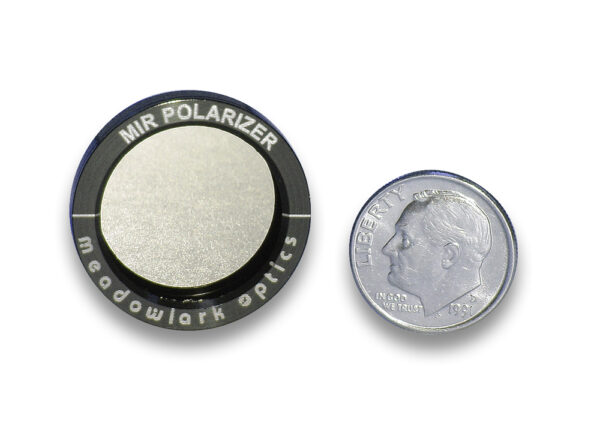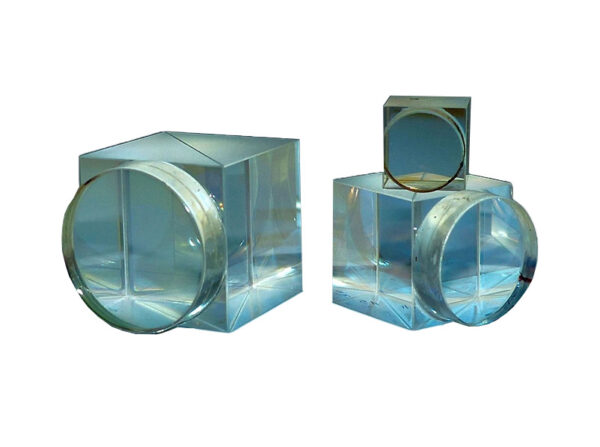Versatile Glan-Thompson polarizer for research and industry
The Glan-Thompson polarizer is a proven optical element for separating linear polarization. It consists of two birefringent prisms, usually made of calcite (CaCO₃), connected at a specific angle. This design utilizes the effect of double refraction to transmit one polarization component of the incident light and deflect the other from the system at a specific angle. The result is an extremely clean separation of polarization planes, which is crucial for many scientific and industrial applications. The Glan-Thompson polarizer is particularly impressive due to its high extinction rate, which effectively suppresses unwanted polarization components.
Technical features
An essential feature of the Polarizer is its ability to enable consistent and reliable polarization separation across a wide spectral range. Its design allows for high transmission for the desired polarization plane while simultaneously providing excellent suppression of the orthogonal component. Its compact, robust construction makes it ideal for integration into a wide variety of optical systems, even under confined spaces. The Glan-Thompson polarizer demonstrates excellent temperature and performance stability, particularly in applications requiring high optical power. Its precise alignment and the use of high-quality materials ensure its reliable operation even under demanding experimental conditions.
Areas of application
The Glan-Thompson polarizer is used in numerous areas of optics and photonics, particularly where precise control and analysis of polarization is necessary. In spectroscopy, it enables the targeted selection of polarized light, thereby improving measurement accuracy and signal fidelity. In laser optics, the Glan-Thompson polarizer is used in beam shaping, in the construction of interferometers, or in beam conditioning. Due to its high accuracy, this polarizer is also an indispensable element in polarimetric imaging and optical metrology. Furthermore, it is used in research areas such as quantum optics, biophotonics, and semiconductor characterization, where precise polarization ratios are crucial for the quality and meaningfulness of the results.




